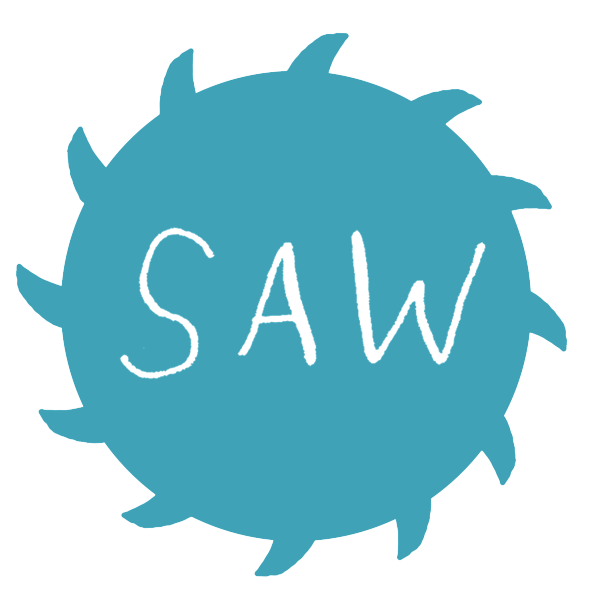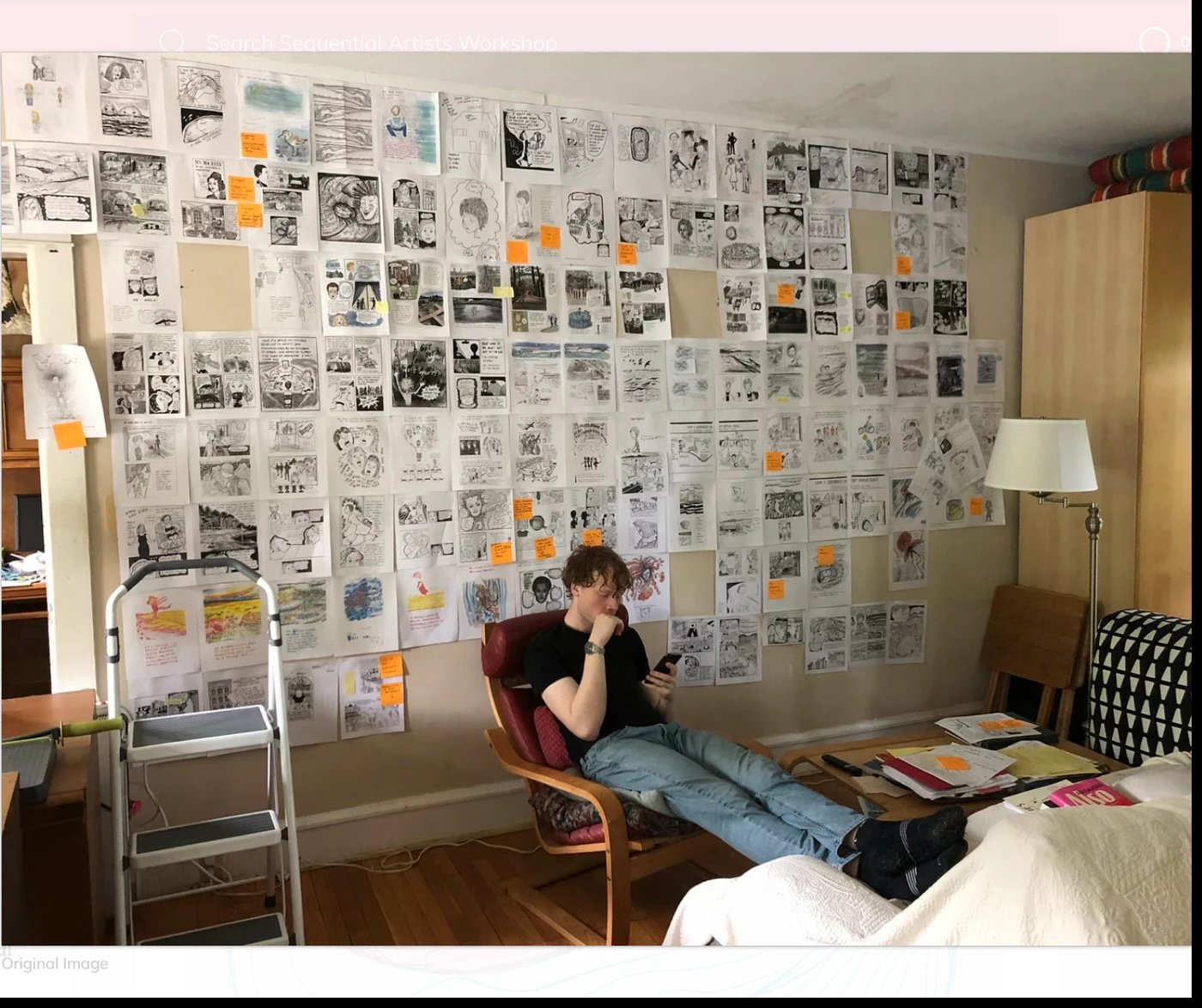The Terrible Anvil - Building a Dream Castle - Episode 4
Building a Dream Castle
On Building a Sustainable Practice / Workspace / Project / Audience
Hi, Friends!
Today on Episode Four of The Terrible Anvil, we tried to tackle a topic from Adrean last week on making a sustainable creative physical space and habits to make work, and as usual veered off topic and expanded and waxed philosophical on all the different types of "castles" creatives build: the physical workspace, the vision for the work itself, the audience you hope to reach. I also am editing a book (The Bootlegger's Guide to Comics!) and we took a topic from the early draft wondering: What's the purpose of an audience or editor, and when to open the door of your castle to share work?
Paradise Garden in Georgia, USA
Chauvin Sculpture Garden, Houma, Louisiana, USA
Some good stuff from the call chat:
Tom phrased our inquiry in a great way: Castles: Having dominion over workspace, audience, or work mode, or work itself
Later on the call I added some castle-like keywords as a way if imagining what we're building, be it studio time and space, or the work, and/or the metaphorical castle's relation to editors/audience: Privacy, fortified, high vista, strong
From Maria Fitzgerald:
"Oh I was thinking the work we create is the dream castle…." (YES, that too!)
And Leonie Sharrock:
My ideal work space would be a huge desk/table and a swivel chair with arms and headrest, with a materials filing/shelving system right next to it, all in the middle of a baggage-carousel in an abandoned warehouse (loads a room for my stuff!) where all the fragments of projects rotate around in plain view, like a sushi bar, for me to choose which to work on today! There would be battlements upstairs as well, obviously!
We were wondering why in so many Pro-Calls (Laura Gao, K. Woodman-Maynard, Tessa Hulls) we become hypnotized by the story structure notes on studio walls:
(Here's a shot from a student's work in progress here)
On the one hand, the physicality of the work on the wall makes it feel more REAL to everyone, but also sometimes one fancy process with sticky-notes that works for one creator might not yield the same results in the hands of a different artist...your mileage may vary, as they say! But it is inspiring! And influences how we might build our own workspace or story (or both!)
Sally Charette was interested in physical workspaces (me, too!) and might start a thread....*UPDATE* thread is over in FLOW + PUBLISH if you want to share!
Sally shared: "I am still interested in the question of work space. I don't think anyone can prescribe for anyone else. But I want to think about what I need to have around and how to make it reliable and yet flexible, because sometimes I can't spend another moment in a specific chair."
Maria Fitzgerald noted that: (writer) "Lauren Groff talks about having different places in her house to work… a place to just write on paper, also other places to sit and work, She talks about the importance of moving around her work space. Some people have a dedicated drawing table…Of course she lives in a big house. But you could work anywhere. On the bus…. In a park, a restaurant, etc…"
Leonie Sharrock also shared: "My house is tiny, but I have multiple work stations with duplicate basic materials, so wherever I have to be, I can jot things down, write, sketch, make cut-outs, etc... in two of them I can paint, but everything has to be miniaturised."
Tom Hart also wondered about the perils of the INFODUMP (this can happen with nonfiction research, but also world-building/backstory with genre/fiction, too) sometimes called the Steven J. Hotdog dilemma (I am calling it that)
We also thought about how to share info and when, with Donna Druchunas asking: "Beth Trembley always talks about how memoir includes story (you THEN), and essay (you NOW). How could that transfer to other forms of nonfiction comics?"
We were also thinking about how castles might be influenced by movement or mobility:
Tom Hart also described the act of drawing from childhood and afterward, closing his body around the work like a cocoon, with Jess noting that: Drawing is the castle itself (sitting on the floor, closing around the work)
Darlene Campbell :
Roald Dahl in his outdoor shed with a board across his lap.
Donna Druchunas:
I LOVE to work at coffee shops and the library too. I haven’t done that as much since I moved to VT.
Sally Charette:
I can use my iPad anywhere. It's great for ideas right before bed or in the middle of the night. The only way I draw in bed is with the iPad.
And we didn't even talk about BOUNCY CASTLES or PODCASTLES (I think these gems are from Walter Hudsick and Maria Fitzgerald, respectively.)
(and a graphic memoir Tom mentioned on the call: The Third Person by Emma Grove)
Join us over in Comics Flow + Publish for the next TERRIBLE ANVIL live call, on February 15th (time TBD, 11am OR 3pm) Eastern!
On episode five we are gonna try to talk about something tangible and visible IE LETTERING! aka How I Learned to Stop Worrying and Love the Letter--!
Happy Making,
Jess
WANT TO MAKE AND READ MORE COMICS?
Do you have a story inside you that’s just itching to come out, but want some guidance to help push it out?
Learn more about intensive comics learning with teachers at SAW by checking out SAW’s Year-Long Intensive Program and our Six-Month Graphic Novel Intensive.
Be sure to also check out our Online Courses, some courses are offered year-round and are always enrolling while others are limited in space and come around only once a year!
Our Graphic Memoir Intensive runs year round and is always enrolling. It includes access to a vibrant working community, twice-monthly live online check-ins, weekly prompts, and access to SAW’s Monthly Pro Calls!
Our Comics Flow Group, or SAW FLOW MEMBERSHIP, is also year-round and always enrolling and is SAW's MOST AFFORDABLE course option with access to Monthly Pro-Calls!
And, of course, come see what we’re all up to on SAW's Mighty Network anytime!





